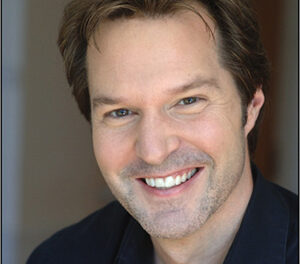A new era has begun for chamber music at Duke and, like any disruption in long-held habits, some of the changes will take some getting used to. Duke Performances‘ Chamber Arts Society began its 68th season with a group of old friends who have appeared numerous times at Duke, albeit in different formations. The Finckel, Setzer, Han Piano Trio performed a traditional but spectacular program at the recently unveiled, renovated Baldwin Auditorium. For many patrons of the Chamber Arts Society (some of whom go back as many as 50 years), this change was not welcome, and a resounding “boo!” was heard last season when this relocation was announced. Some adjustments include a new set of parking hurdles, poorly lit Durham streets to traverse and – maybe the biggest issue – reserved seating for all. But once the music started and the evidence of the pristine acoustical setup reached the ears, any minor inconveniences were soon forgotten.
This piano trio is a family affair. David Finckel, who is in his first year of retirement after 34 years as cellist with the famed Emerson String Quartet, is married to pianist Wu Han. Together, they also formed ArtistLed, classical music’s first musician-directed, internet-based recording company. The violinist is Philip Setzer, Finckel’s longtime colleague in the Emerson Quartet.
There are many choices to be made when performing on the new stage at Baldwin. This trio chose to be relatively far back: it would have been interesting to have had the performers also play in another location just to hear the difference. This very well-balanced program of piano trio favorites began with the second, in G Major, of Beethoven’s Opus 1, his first published works (1795). This trio of trios was dedicated to Prince Carl Lichnowsky, an early benefactor of Beethoven’s. The work presented on this occasion has Beethoven in full Haydn commemorative mode. Rather than trying to break the old master’s bonds, the younger composer seems simply to be reveling in the genre that Haydn had created, but with his own unique, still gestating style. It is a typical four-movement late-classical-period work that begins with an Adagio leading into a spirited Allegro Vivace, a favorite device of Haydn that Beethoven would also later use as an opener in several of his symphonies and piano sonatas. Already we hear the complete immersion in and expression arising from the composer’s vision by each individual player and by the ensemble as a musical unit. After a lengthy and solemn Largo that portends Beethoven’s later profundity, the final Presto is something of a rarity in describing his music: humorous. Here, both string players got to show off very difficult and rapid bowing while Han provided a light and airy piano underpinning. This is one of those pieces that brings a smile to your face and even an audible laugh at its conclusion.
There is a lot of political and historical background to Dmitri Shostakovich’s 1944 emotionally charged Piano Trio in E Minor but let’s bypass all of that. This is for the simple fact that as an independent musical work, it is one of the most deeply moving artistic creations ever and really needs no exterior baggage to “explain” it. It begins with other-worldly eerie harmonics, first by the cellist and then the violinist in a duet that sounds like spirits intertwining across time and space. When the piano finally joins in with chords so unique you’d swear they’ve never been played before, we are in full-blown angst. As in many of Shostakovich’s works, there is emotional rescue on the horizon as we journey across the spectrum to a slightly demented frivolity that is the unmistakable voice of this composer. We go through several more schizophrenic cycles – musical depictions of the depths of despair to carefree exaltation – perhaps suggesting that we shouldn’t get too comfortable with either.
At this point, since this is a review of a performance, I must note my observations of the performers and their performing personalities. My memory of Finckel – from numerous Emerson String Quartet concerts – was that of a supremely gifted and sensitive cellist but someone reserved, rather stony-faced and even dour. Here, however, nothing could be further from that description. His facial expressions and countenance were practically a guidebook for the character of the music, and he appeared to be having as much fun as is humanly possible with clothes on. Wu Han is a fiery but not overly ostentatious musician whose brilliant execution speaks for itself. Violinist Setzer is the epitome of physical reserve and economy. But all of this coalesced into a unified whole that by their individual and combined expertise demanded attention to every note.
The “Dumky” Trio: just saying the name brightens up your day a bit. Dvořák’s six-movement trio, completed in 1891 shortly before he left for his musically fruitful trip to America, is a nationalistic feast of Slavic and Bohemian melodies, rhythm, and harmony. “Dumky” is actually a form of the word dumka, a nostalgic or elegiac song, but it is certainly not all doom and gloom as each of these six movements, played continuously, alternate slow sad sections with up tempo, more cheerful episodes.
It is only through Dvořák’s seemingly endless reserve of invention that he somehow managed to string together six movements (that in itself being highly unusual) that are essentially the same character and make this trio not only interesting and listenable but also one of the best-loved chamber works ever written. The Finckel, Setzer, Han Trio seemed almost giddy with joy and enthusiasm while playing this delightful work. At the fourth curtain call, they succumbed to pleas to play an encore and did so in the lyrical mode with the lilting and soulful slow movement of Mendelssohn’s D minor trio.











